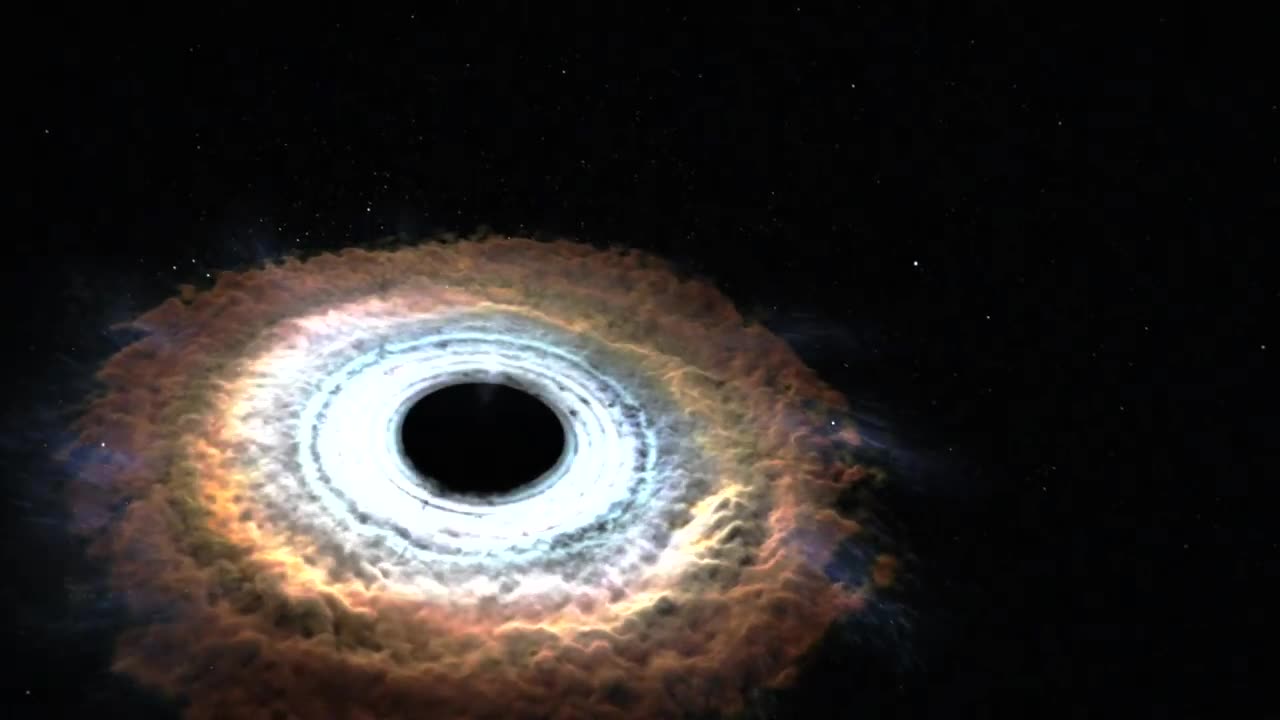Premium Only Content

NASA | Massive Black Hole Shreds Passing Star
NASA | Massive Black Hole Shreds Passing Star
6.2M views · 8 years ago...more
NASA Goddard
1.53M
Subscribe
17K
Share
Save
Report
Comments908
David John
You can tell it is fake because you cannot hear music in space.
13:21
NASA is Recieving Mysterious Signals Every 22 MINUTES | What it is Trying to Say?
GetsetflySCIENCE
New
959K views
27:10
The Black Hole – [Hindi] – Quick Support
Quick Support•2.8M views
15:28
Saba ko Apna iPhone gift kardiya😍 | shocked laggaya😂
Maaz Safder World
New
278K views
10:35
Earth's Evolution in 10 Minutes
What If•1.9M views
0:34
Nasa releases audio of what a black hole 'sounds' like
Guardian News•5.4M views
1:33
Nasa footage shows how terrifyingly vast black holes are
The Independent•57K views
4:55
What If You Fell Into a Black Hole?
What If•13M views
15:40
Ohh iPhone 15 pro max gift me milgaya😍 | wife ki taraf se🥺
Maaz Safder World
New
788K views
10:55
This is How First Humans Will Survive on Mars
Zem TV•4.9M views
13:58
Big News! This Experiment May Prove That Multiverse is Actually REAL
अंतरिक्ष TV
New
80K views
9:23
Deepest Hole in Earth - How Deep We can Dig in Planet ?
Zem TV•11M views
13:21
FINALLY HAPPENED! NASA Captures First SOUND of BLACKHOLE
GetsetflySCIENCE•1.5M views
Description
NASA | Massive Black Hole Shreds Passing Star
NASA Goddard
17K
Likes
6,282,682
Views
2015
21 Oct
This artist’s rendering illustrates new findings about a star shredded by a black hole. When a star wanders too close to a black hole, intense tidal forces rip the star apart. In these events, called “tidal disruptions,” some of the stellar debris is flung outward at high speed while the rest falls toward the black hole. This causes a distinct X-ray flare that can last for a few years. NASA’s Chandra X-ray Observatory, Swift Gamma-ray Burst Explorer, and ESA/NASA’s XMM-Newton collected different pieces of this astronomical puzzle in a tidal disruption event called ASASSN-14li, which was found in an optical search by the All-Sky Automated Survey for Supernovae (ASAS-SN) in November 2014. The event occurred near a supermassive black hole estimated to weigh a few million times the mass of the sun in the center of PGC 043234, a galaxy that lies about 290 million light-years away. Astronomers hope to find more events like ASASSN-14li to test theoretical models about how black holes affect their environments.
During the tidal disruption event, filaments containing much of the star's mass fall toward the black hole. Eventually these gaseous filaments merge into a smooth, hot disk glowing brightly in X-rays. As the disk forms, its central region heats up tremendously, which drives a flow of material, called a wind, away from the disk.
-
 1:03:51
1:03:51
Flyover Conservatives
22 hours agoGeneration Z’s Revolution: 17 Year Old Author on the Return of Faith, Family, and the End of Feminism - Hannah Faulkner; Economic Update - Dr. Kirk Elliott | FOC Show
21.9K1 -
 1:12:43
1:12:43
Adam Does Movies
7 hours ago $4.46 earnedMoviegoers Are Singing Now! + Lilo & Stitch + Sonic 3 - LIVE!
38.6K1 -
 1:26:05
1:26:05
Donald Trump Jr.
10 hours agoRegime Media Imploding: What’s Next for MSNBC? Plus Michael Knowles & Alex Marlow | TRIGGERED Ep.194
197K181 -
 37:26
37:26
Glenn Greenwald
8 hours agoGlenn Takes Your Questions: On Trump's Cabinet, The G20 Summit, and More | SYSTEM UPDATE LOCALS SPECIAL
68.9K20 -
 LIVE
LIVE
We Like Shooting
14 hours ago $0.81 earnedWe Like Shooting 586 (Gun Podcast)
155 watching -
 52:14
52:14
Uncommon Sense In Current Times
9 hours ago $0.25 earned“Pumpkin Pie Politics: Bridging the Thanksgiving Divide to Protect The Family"
7.62K -
 1:01:28
1:01:28
The StoneZONE with Roger Stone
4 hours agoWhy Jack Smith Owes Americans Millions of Dollars for Fake Investigations | The StoneZONE
29.1K3 -
 LIVE
LIVE
Tundra Gaming Live
9 hours ago $2.17 earnedThe Worlds Okayest War Thunder Stream
248 watching -
 2:22:30
2:22:30
WeAreChange
7 hours agoBREAKING: Biden Admin Could SEND NUKES To Ukraine?! UK & France To Send Troops? w/ Roger Stone
45.9K15 -
 1:35:49
1:35:49
The Officer Tatum
7 hours agoLIVE: Jack Smith DROPS Case, Elon Musk BREAKS MSNBC | OT Show EP 14
80K75